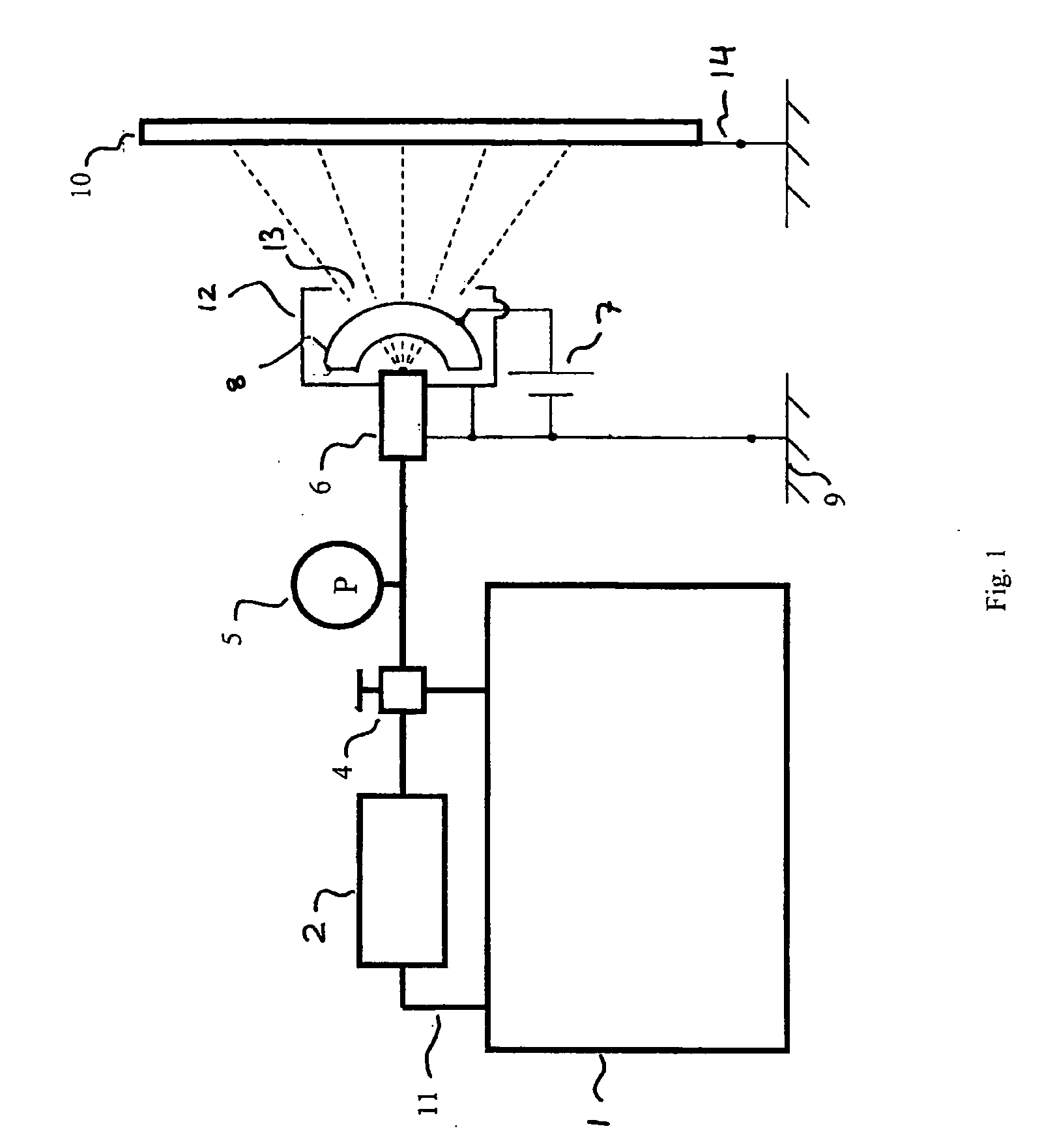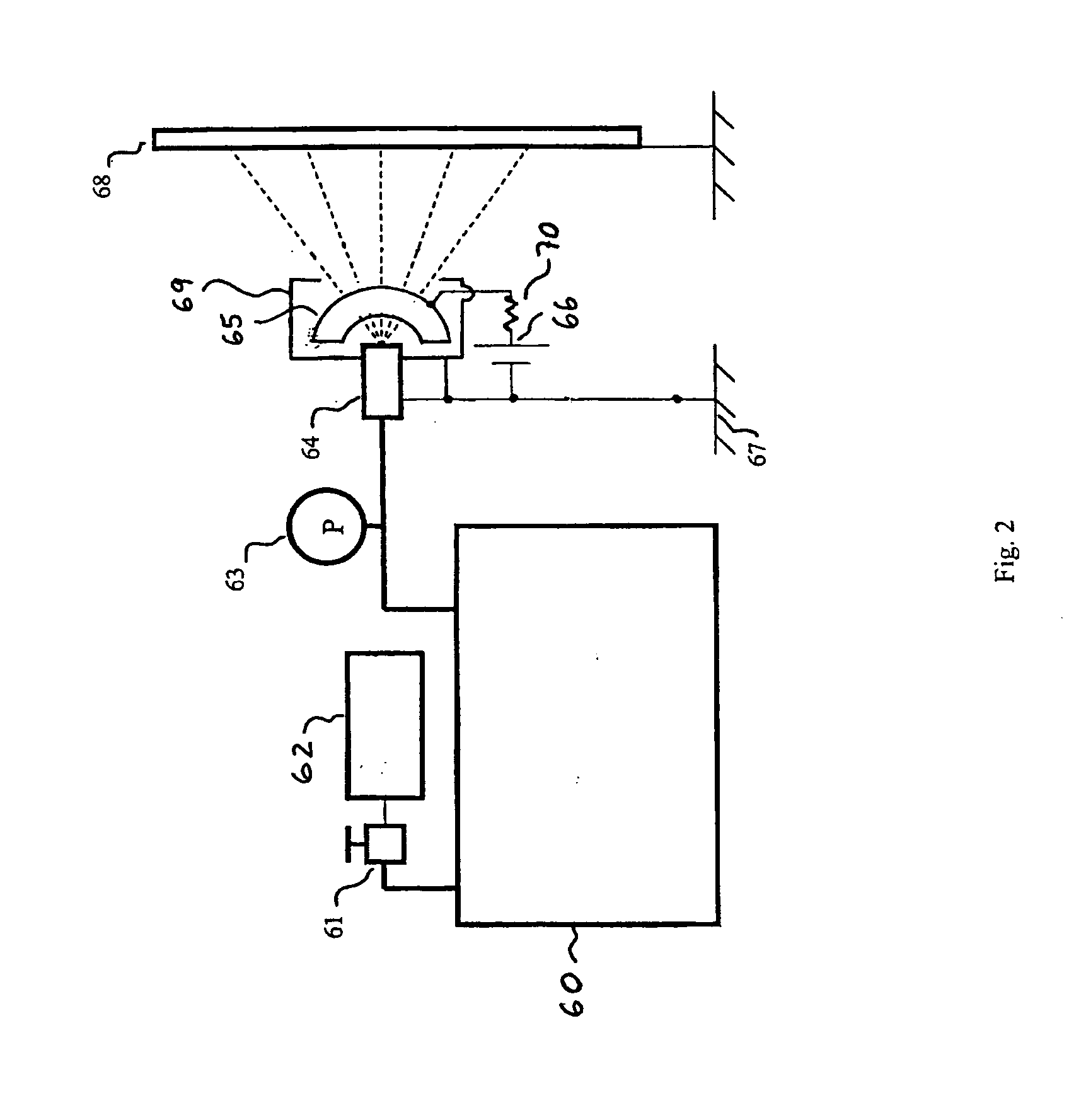Method and apparatus for high transfer efficiency electrostatic spray
a technology of electrostatic spray and transfer efficiency, which is applied in the direction of electrostatic spraying apparatus, lighting and heating apparatus, burners, etc., can solve the problems of reducing the efficiency of electrostatic charging, complex nozzle assemblies for such spraying, and unsatisfactory high-speed spray of liquid droplets or air, etc., and achieves relatively low cost of adding an electrode and an unregulated low-power converter
- Summary
- Abstract
- Description
- Claims
- Application Information
AI Technical Summary
Benefits of technology
Problems solved by technology
Method used
Image
Examples
Embodiment Construction
[0046] An apparatus, an electrostatic spraying system, for electrostatic spray in accordance with the principles of the present invention is illustrated schematically in FIG. 1. The liquid or particles to be sprayed are contained in reservoir 1, which is connected by a tube 11 to a pump 2. The spray pressure is controlled by a regulator 4 and displayed by a pressure gage 5. The spray gun 6 is an integration of a valve, a connection for liquid supply, and a nozzle from which a liquid jet emanates and then disintegrates, i.e., liquid jet breaks up and separates into particles (droplets). The electrostatic charge is induced from the ground 9 through the spray gun onto the particles by the high voltage on the electrode assembly 8. The high voltage is generated by a high-voltage (HV) converter 7 which converts a low voltage DC signal into high-voltage DC output. The HV potential can be either positive or negative polarity. The particles are sprayed toward a target object 10, e.g. a wall ...
PUM
 Login to View More
Login to View More Abstract
Description
Claims
Application Information
 Login to View More
Login to View More - R&D
- Intellectual Property
- Life Sciences
- Materials
- Tech Scout
- Unparalleled Data Quality
- Higher Quality Content
- 60% Fewer Hallucinations
Browse by: Latest US Patents, China's latest patents, Technical Efficacy Thesaurus, Application Domain, Technology Topic, Popular Technical Reports.
© 2025 PatSnap. All rights reserved.Legal|Privacy policy|Modern Slavery Act Transparency Statement|Sitemap|About US| Contact US: help@patsnap.com



